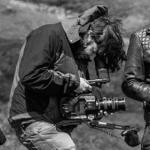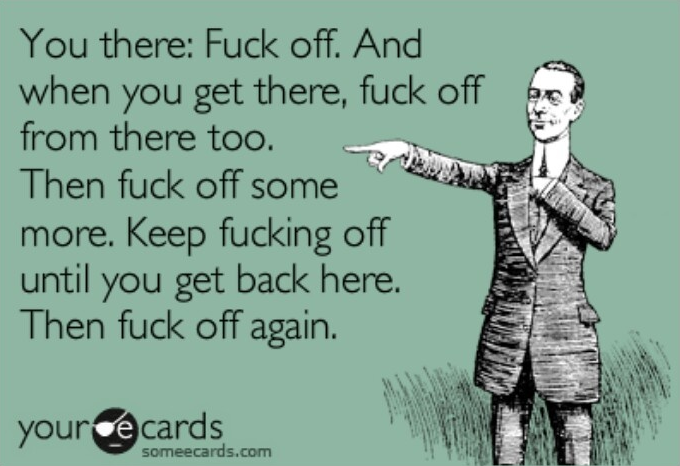Leaderboard
Popular Content
Showing content with the highest reputation on 12/31/2020 in all areas
-

Review of the year, 2020 - THE YEAR FROM HELL!!
PannySVHS and one other reacted to Andrew Reid for a topic
Here's my review of 2020 in cameras / filmmaking. Doesn't make for easy reading so take a stiff gin with you to this article... https://www.eoshd.com/news/a-review-of-the-year-2020-by-andrew-reid/2 points -
For some time I've been thinking about the texture of film. I've also been thinking about the texture of RAW images, both 4K and also 1080p. And I've been thinking of the texture of low-bitrate cheap digital camera images, and how much I don't like it. Last night I watched Knives Out, which was very entertaining, but of note was that it was shot by Steve Yedlin ASC, and that it was shot in 2.8K RAW and mastered in 2K. For those that aren't aware, Steve Yedlin is basically a genius, and his website takes on all the good topics like sensor size, colour science, resolution, and others, and does so with A/B testing, logic and actual math. If someone disagrees with Steve, their work is cut out in convincing me that they know something Steve doesn't! This inspired me to do some tests on processing images with the goal being to create a nice timeless texture. Film has a nice analog but very imperfect feel with grain (both the random noise grain but also grain size of the film itself which controls resolution). Highly-compressed images from cheap cameras have a cheap and nasty texture, often called digititis, and is to be avoided where possible. RAW images don't feel analog, but they don't feel digital in digititis way either. They're somewhere in-between, but in a super clean direction rather than having distortions, with film having film grain which isn't always viewed as a negative distortion, and highly-compressed digital having compression artefacts which are always viewed as a negative distortion. Here's the first test, which is based on taking a few random still images from the net and adding various blur and grain to see what we can do to change the texture of them. The images are 4-7K and offer varying levels of sharpness. The processing was a simple Gaussian Blur in Resolve, at 0.1 / 0.15 / 0.2 settings, and adding film grain to kind of match. On the export file the 0.1 blur does basically nothing, the 0.15 blur is a little heavy handed, and the 0.2 looks like 8mm film, so very stylised! The video starts with each image zoomed in significantly, both so that you can see the original resolution in the file, but also so that you can get a sense of how having extra resolution (by including more of the source file in the frame) changes the aesthetic. Interestingly, most of the images look quite analog when zoomed in a lot, which may be as much to do with the lens resolution and artefacts being exposed as it has to do with the resolution of the file itself. My impression of the zooming test is that the images start looking very retro (at 5X all their flaws are exposed) but transition to a very clean and digital aesthetic. The 0.15 blur seems to take that impression away, and with the film grain added it almost looks like an optical pull-out on film was shot of a printed photograph. In a sense they start looking very analog and at some point the blur I'm applying becomes the limiting factor and so the image doesn't progress beyond a certain level of 'digitalness'. In the sections where I faded between the processed and unprocessed image I found it interesting that the digitalness doesn't kick in until quite late in the fade, which shows the impact of blurring the image and putting it on top of the unprocessed image, which is an alternate approach to blurring the source image directly. I think both are interesting strategies that can be used. Now obviously I still need to do tests on footage I have shot, considering that I have footage across a range of cameras, including XC10 4K, GH5 4K, GH5 1080p, GoPro 1080p, iPhone 4K, and others. That'll be a future test, but I've played in this space before, trying to blur away sharpening/compression artefacts. There are limits to what you can do to 'clean up' a compressed file, but depending on how much you are willing to degrade the IQ, much is possible. For example, here are the graded and ungraded versions of the film I shot for the EOSHD cheap camera challenge 18 months ago. These were shot on the mighty Fujifilm J20 in glorious 640x480, or as I prefer to call it 0.6K.... IIRC someone even commented on the nice highlight rolloff that the video had. All credit goes to the Fuji colour science 😂😂😂 Obviously I pulled out all the stops on that one, but it shows what is possible, and adding blur and grain was a huge part of what improved the image from what is certain to be several orders of magnitude worse than what anyone is working with these days, unless you're making a film using 90s security camera footage or something.1 point
-
But what are necessary precautions? No one Country or Health department can agree. I've had relatives catch the virus just shopping for food. You either shut down the World and ruin the Economy or accept the deaths. Or choose the balance in-between, which does damage to both. Its an easy get out by so many to think that following the rules could defeat a virus. Especially as the rules differ depending where you are. There was only one way out and thats with a vaccine. Lockdowns and restrictions are simply short term remedies but not by any means an end to the mess.1 point
-

Review of the year, 2020 - THE YEAR FROM HELL!!
Jerome Chiu reacted to BTM_Pix for a topic
1 point -
Take a look at this watermarked online screener. https://indee.tv/1 point
-
I used the A7SIII, the S5 and the S1. I returned the SIII because of the noise reduction, colors, IBIS, MP and sharpness. I don't need the 120fps 4K 1.1x and the fast AF-C. My S1 and S5 with the S Pro 2.8 have very fast AF and good enough AF-C. And even if Sony has more lenses I prefer the Lumix ones. I had/have the 24-70mm GM, 70-200mm GM and 50mm Zeiss Sony 1.4, the Lumix Pro equivalent lenses are better (sharpness, bokeh and 3D pop). About the S5, it's a great camera, but the S1 is even better (slightly better IBIS, better EVF, 6K internal next year etc ...) !1 point
-
Panasonic S5 User Experience
Thpriest reacted to TheBoogieKnight for a topic
I think the question is do you need 4k/120, the amazing AF and access to a wider selection of lenses? Two Panasonic S1s here but I'm seriously thinking of adding an SIII just for those things. I don't think the image quality will necessarily be as good but probably not too far off. I love my S1s in pretty much every way (other than a lack of 3k/60 10-bit which is coming in an update).1 point -

My C70 just arrived!
BenEricson reacted to Oliver Daniel for a topic
Thanks, they are just extremely expensive at the moment.1 point -
Could be, they're very easy to drink! Speaking of Korean TV series, they're surprisingly well produced and image quality is often remarkably high. My wife says the storytelling is also very good, so if you're inclined to a bit of soap then they might be worth a watch. Netflix is full of them if you can navigate their algorithm in the right direction 🙂1 point
-
These two delivering the vaccines in those little barrels would be the heartwarming finale that we all need for the disaster movie that has been 2020.1 point
-
1 point
-

My C70 just arrived!
BenEricson reacted to kye for a topic
While the C70 has many advantages and attractive features, I think the above is probably the most important factor of any camera because it impacts the level of creativity and inspiration of the video, not just what colour or clarity the pixels are in the output files. I consistently find that creativity evaporates when I feel like i'm fighting the equipment rather than it having my back and supporting the work. In the creative pursuits, this is a night-and-day difference, but of course, is also different for all people, so it's about the synergy between the camera and the user rather than one camera suiting everyone. Great stuff!1 point -

My C70 just arrived!
Juank reacted to Oliver Daniel for a topic
The video is for a guitar pedal brand, and the track was recorded especially for this video. I need more time with the C70 and I need to see how it is with RF lenses (but they are $$€€££!!) Id say it’s definitely worth the price tag. It fits in everything a video camera has into a very helpful (and innovative) form factor. You just pick up and shoot, no messing around. It’s the form factor of the future, in my opinion. Its always nice to have RAW, however I barely use it. For its purpose, I don’t think it needs it. But is always nice to have. The footage is very high dynamic range, I’m not used to it being this high. It’s easy to grade and the footage looks great. The A7SIII is a little more contrasty. 4k120 is slightly softer, whereas the A7SIII is the same in every 4k frame rate. The AF is good on Sigma 18-35, not great on the 50mm. Not used RF yet. It’s not as good as the A7SIII with native lenses. The A7SIII is more featured and works fully in all recording modes. I need more time with the C70 but my early impressions are very positive. The A7SIII is really in it’s own “space”, it’s probably the best all round video tool for the money and in my opinion, “camera of the year.” It’s almost flawless and very refined. The C70 wins as a conceptual innovation. It’s beautiful to hold and makes shooting very joyful.1 point -
Pro camcorder ergonomics - why are they so rubbish?
Grimor reacted to barefoot_dp for a topic
Well, that's a matter of opinion, as you say. I think it makes sense and anyone who's worked in broadcast can instantly pick up one of these (or an FX9 or FS7), start shooting, and find most of the controls they're used to. Apart from setting the right res/codec for the project or formatting cards, you can often get through an entire days shooting without ever needing to enter the menu's with these cameras. And usually you can find the button you need without even looking. You literally push one button. The video you linked shows you how to change your S&Q settings, but once that's done, it's a single push of a button to get into slow-motion mode. It will be far from "less cluttered" once you have 2x xlr cables (+ adapters to full-size), headphones and HDMI cable coming out of the side with all those little rubber doors dangling around. Not everyone will need that, but it's just as easy to criticise the C70 design as the FX6 (even more so in this regard). The FX6 has the ports right where you need them on a set - on the dumb side. It even has the ports recessed enough so that you can avoid obstructions when using a battery plate. Unless you need to shoot any high or low angles, or on a shoulder mount, and can't use the non-rotating handle. In that situation you have exactly 0 nice dials. FX6/FS7/FS5 style handle is very versatile and convenient. Fair point, in some cases. But if you're stripping the camera down, say to shoot on a gimbal or to mount it in a car, are you really going to want audio in-camera? All those cables/mics/receivers would just get in the way and go against what you're trying to achieve. You'd probably be recording externally anyway. A deal-breaker for some, (eg if you MUST have in-cam audio on gimbal), but for most it's a problem that is easily solved when it arises. This comment shows just how out of touch you are with most people who will actually use a camera like the FX6. The reason people will build a rig is to improve ergonomics (for their particular preferences) and reduce fatigue. It also lets them use all the tools they'll need when they work in a crew with a 1AC, soundo, director, etc. It lets them go from tripod to handheld to shoulder faster. It lets them put the shoulder mount and top handle directly in line with the COG for perfect balance. It lets them put the camera down on unbalanced surfaces without getting damaged or falling over. It lets them power everything from a single battery. It also gives the camera more mass which reduces shake and gives a more natural feel to the images (and if done right, makes it easier to balance and operate too). The only people building rigs to impress other people are those who care more about THEIR image than THE image. Again, we're all entitled to opinions. But you're also making pretty outlandish statements that show how much understanding you lack about this product and the people who will use them. It's the equivalent about me writing an article claiming the Isuzu N series is a "monstrosity of stupid design" because it doesn't fit into the average household garage.1 point -
Spending more time with the 28mm, I'm thinking this would be one I'd choose for cinematography. It's not super-sharp, which is a good thing, and everything I shoot with it ends up looking like a painting. Barrage et Inukshuk by Brad Hurley, on Flickr Clouds over Montréal-Nord by Brad Hurley, on Flickr Daybreak by Brad Hurley, on Flickr1 point
-
Over the last couple of months I built up a set of three Rokkor primes (I bought four but the 85mm had a bad case of fungus); I now have a 28 mm, a 55 mm, and a 100 mm. So far I've only used them for photography but am planning to try them on my Micro Cinema Camera once I get a Minolta MD to Nikon F adapter so I can use with my Nikon-to-MFT speedbooster. These lenses have rejuvinated my photography and I'm taking some of my best photos ever. The colors are painterly, the bokeh is gorgeous. The only drawbacks are the lack of flare resistance and a few other minor things; I like that they are generally low-contrast wide open but super-sharp stopped down a bit. A few examples: 28mm: 100 mm: 55 mm: 85 mm:1 point
-
Matt Frazer from Panasonic answers why it doesn't work in the S1H in this video at 47.55, a limitation of how they designed the flow of data. https://youtu.be/lQ2cuFfcWB8?t=28750 points



